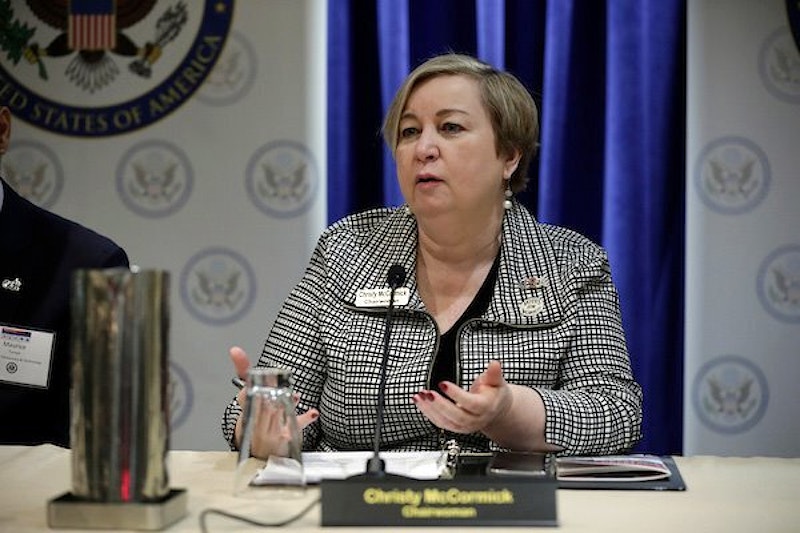Adam Kincaid, the Executive Director of Fair Lines America, gave a presentation on the state of redistricting around the country.
Kincaid painted a picture of redistricting as a process that is highly partisan, with both parties doing what they can to protect their own interests and limit the number of competitive seats where opponents could mount a realistic challenge.
His presentation was a pretty good argument for redistricting reform. The For the People Act (HR1), currently stalled in Congress, contains a provision requiring states establish independent redistricting commissions, which would limit the power of partisan hacks to rig our electoral maps. According to to the Brennan Center, the redistricting reforms in HR1 would "ban partisan gerrymandering by prohibiting adoption of any map that has the intent or effect of 'unduly favoring or disfavoring' one political party over another."
Kincaid signed on to a memo published by the Conservative Action Project, opposing HR1 in 2019, which they referred to as a "Fantasy of the left." Other signatories on that memo include Lisa Nelson, ALEC's CEO, as well as Cleta Mitchell, Hans A. von Spakovsky, Trent England, and J. Christian Adams, all of whom spoke at the San Diego meeting.
Fair Lines America claims on its website to be a "nonpartisan organization" that supports "fair and legal redistricting" and makes "strategic investments in redistricting-related reforms and litigation."
In addition to his role with Fair Lines American, Kincaid is also the Executive Director of the National Republican Redistricting Trust, which describes its role more straightforwardly as coordinating "the GOP’s 50-state redistricting effort."
According to Kincaid, 25 states are now done with their reapportionment. Others are still drawing their maps, and some are with the courts for a variety of reasons. The Brennan Center has a great tracker of where each state is at. According to Kincaid, in many of the states where the maps are now complete, both parties have used their power to try to maximize political advantage. That means drawing district lines to secure reliably safe seats for their own party, while also reducing the number of competitive seats where the other party might realistically challenge.

